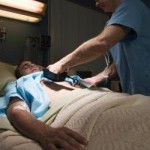Heart Defibrillator Regulations Proposed By The FDA
Regulations in the manufacture of heart defibrillators will be toughened according to the Food and Drug Administration recently. The decision stemmed from numerous malfunctions and deaths in recent years.
The devices, which are used in jolting a weakening heart back to its normal rhythm, are found in numerous places including airports, malls, churches and casinos. The American Heart Association revealed that deaths due to cardiac arrest have reached over 400,000 people each year in the US. Heart defibrillators are designed to restore the regular rhythm of hearts that have suddenly stopped or have gone out of their regular rhythm.
Reports of malfunctioning devices have reached 45,000 since 2005. Most were due to problems in their production while others were due to inadequate maintenance. The changes will entail close monitoring on the design and production of the devices.
An order that was issued by the FDA will make it necessary for the detailed design and controls of the devices to be submitted to the agency. Many of the devices are being manufactured outside of the US. Regulators will also be given the authority to inspect the factories of the manufacturers.
Clinical trials would normally be conducted by manufacturers when devices are regulated if the order will become official following a period of public comment. However, many heart defibrillator manufacturers already have the necessary information that would be produced by these trials.
Following the ninety-day public comment period, another ninety days will be given to companies to allow them to file the necessary paperwork. A fifteen-month period will be given to the companies in order for them to conform to the changes.
Some manufacturers have indicated that the order will not affect the distribution of the devices, although smaller companies will feel the effect due to the resources needed to comply with the regulation.
Although no significant changes in cardiac arrest death rates since heart defibrillators were introduced into the public, experts have indicated that this may change if the accessibility to the devices is enhanced. Only five percent of cardiac arrests had bystanders using the devices since many patients have the attacks when they are in their homes.
Innovations may be affected by the tougher regulations, according to Dr. Mickey Eisenberg of King County, Seattle. These innovations are necessary to improve the use of the heart defibrillators. It is necessary for the price of the to go down in order to increase their usage in private homes.
The expenses in conforming to the regulations will increase although companies offering different heart defibrillator models will have to pay only once.
The increased cost may result to an increase in the price of the devices, which will make them less affordable. Better access to the devices has increased survival rates in Seattle in recent years.
However, the toughened regulations may increase the confidence in the use of heart defibrillators, which will encourage people to use them.
